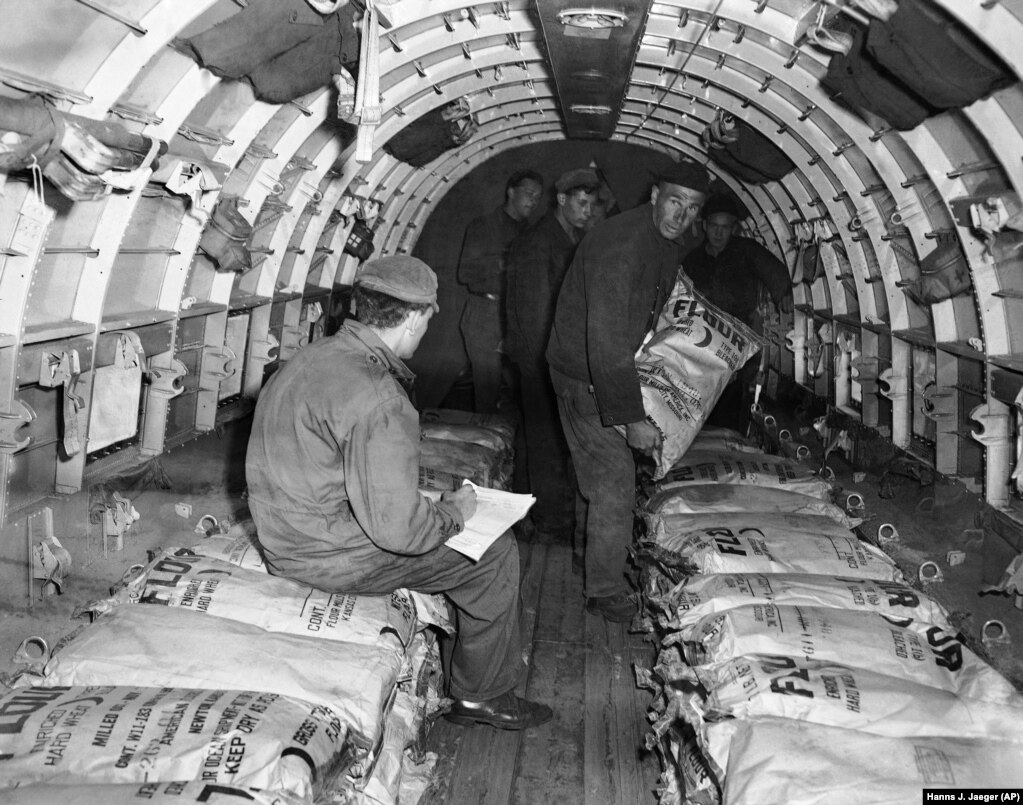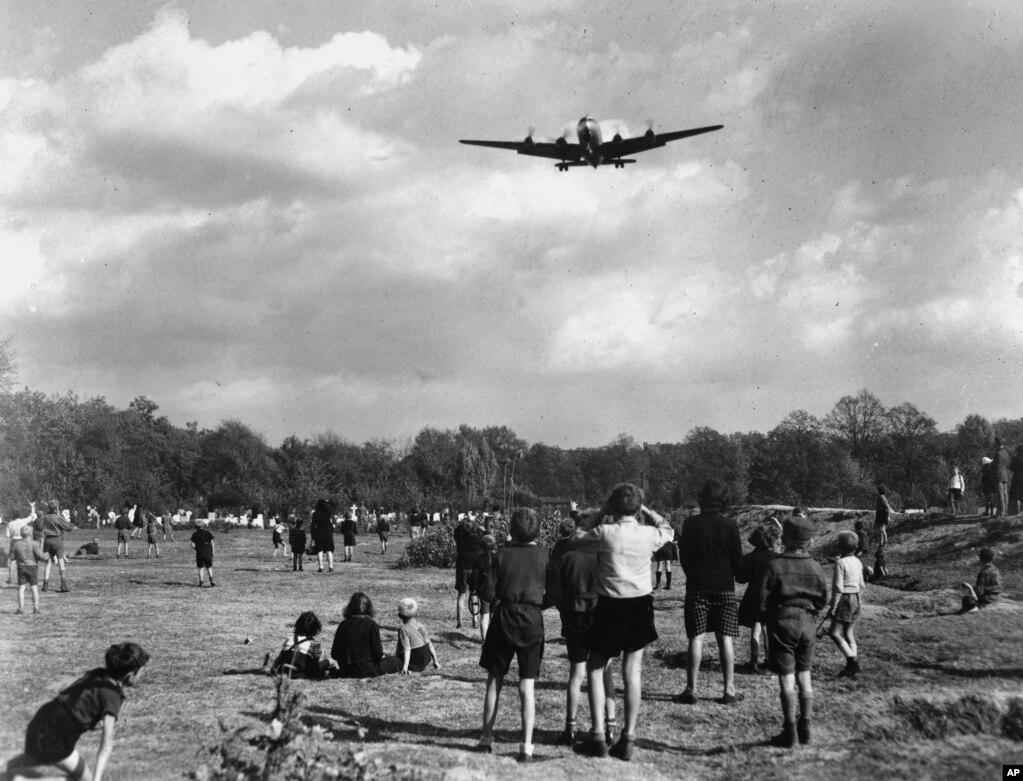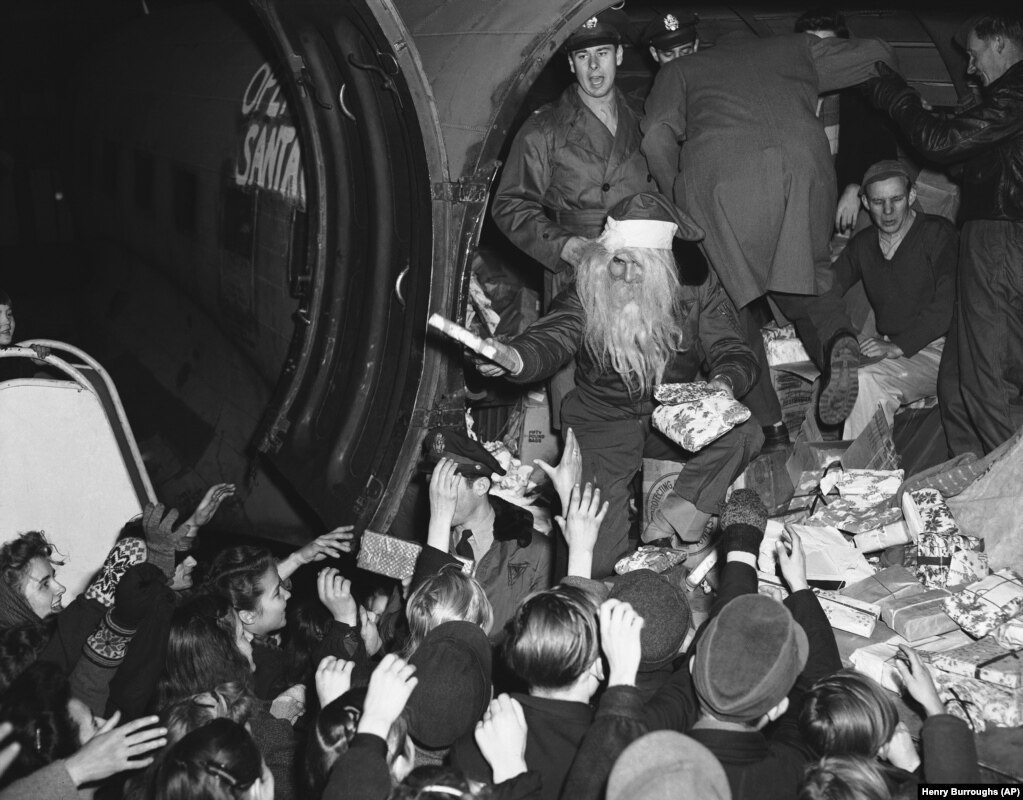The Berlin Airlift 70 Years On
The end of the Berlin Airlift on September 30, 1949 marked a stunning, early victory in the Cold War. The crisis grew out of a plan by the United States, Britain, and France a year earlier to create a stable currency for western Germany. The Soviets reacted angrily, wanting to control the country's post-war economy. They cut off power, rail, road and water access to West Berlin, which lay deep inside the Soviet zone. President Harry S Truman rejected his generals' advice to launch a military confrontation and instead worked with the air forces of allied nations to launch the largest humanitarian airborne operation in history. The Americans called the bold plan "Operation Vittles,†while the British dubbed it “Plainfare.†Over 15 months, more than 200,000 planes delivered about 2.3 million tons of supplies to the beleaguered city, which convinced the Soviets to end their blockade.

1 A U.S. Air Force C-54 Skymaster descends into Berlin's Templehof Air Base as hopeful Berliners watch on August 10, 1948. The airlift was in operation for 15 months after the Soviet authorities cut off the city. Some 101 participants died, including 40 Britons and 31 Americans, mostly due to non-flying accidents.

2 An American soldier checks a manifest while overseeing the loading of flour into a C-47 transport at Frankfurt's Rhein-Main Air Base on June 29, 1948. The base was the main supply hub for Berlin Airlift.

3 Most U.S. planes used the southern corridor, which connected Frankfurt and Tempelhof, the American-operated base in the heart of the city. All British planes and about 40 U.S. planes used northern corridor, running southeast from the Hamburg area and landing at British-operated Gatow airfield in West Berlin. Planes flew 24 hours a day, seven days a week, and would land as often as every minute.
....

11 Children await candy bars dropped from a C-54 Skymaster on its approach to Tempelhof. Lt. Gail Halvorsen, known as the "Candy Bomber," dropped sweets with handkerchief parachutes to youngsters on his trips to Berlin.
....

16 Young Berliners get a treat at Tempelhof Airport in Berlin on December 15, 1948: Christmas gifts from a flying Santa Claus, also known as Lt. John Konop of Astoria, New York. This was the first planeload from American donors to be distributed under the U.S. Air Force program, "Operation Santa Claus."
Read more at: https://www.rferl.org/a/berlin-airlift/30185134.html
God Save The West.
This story is so moving and touching really. That this happened. See more at link, the Brits were quite active too, evacuating children even.
How many flights did the allies make to defy the Soviet blockade? Can you believe over 278,000!